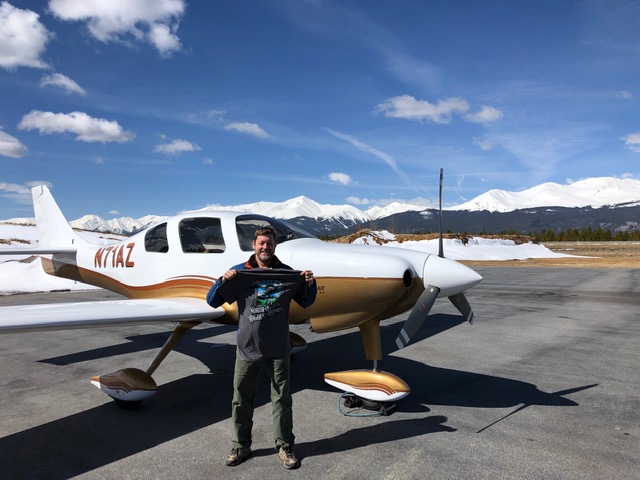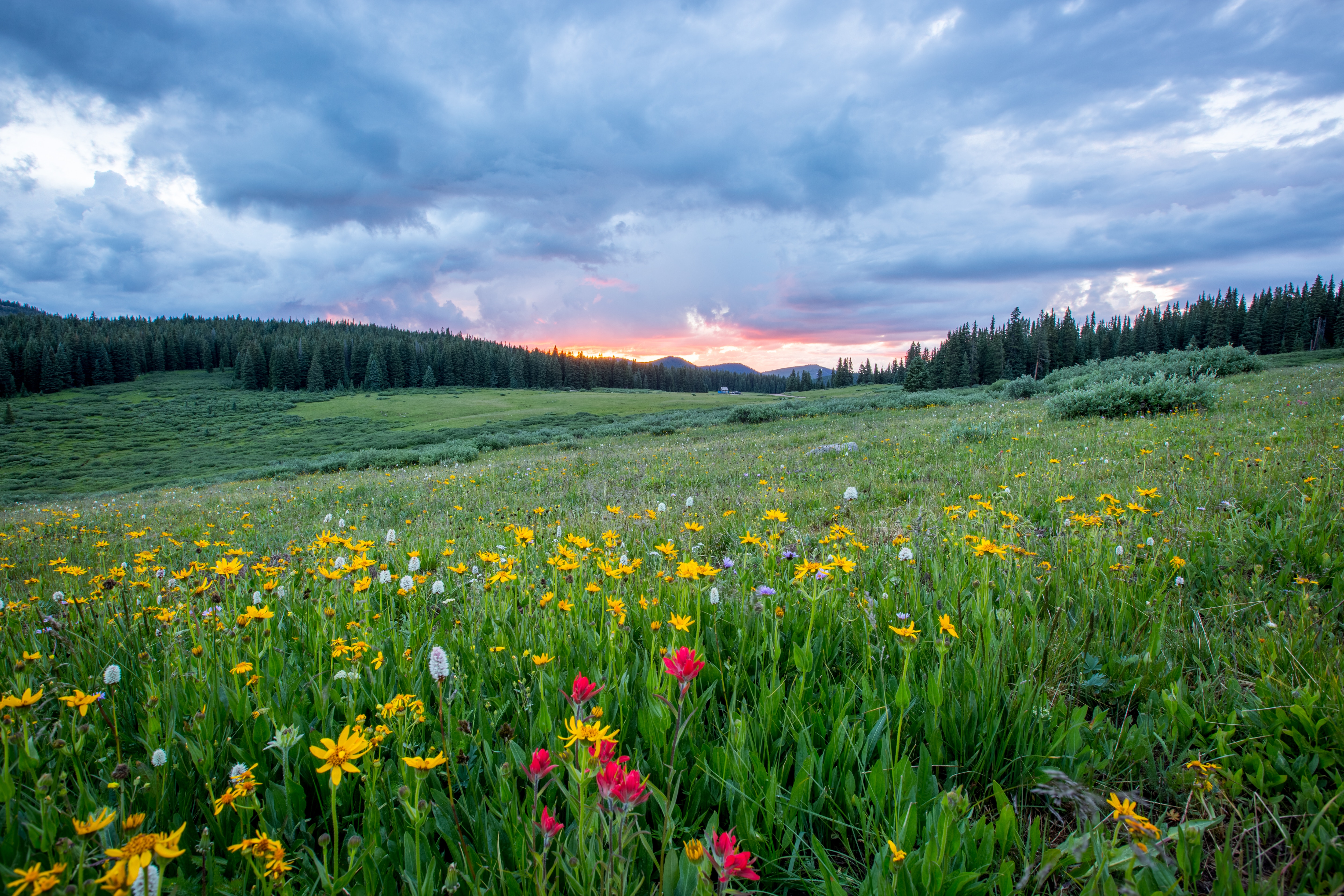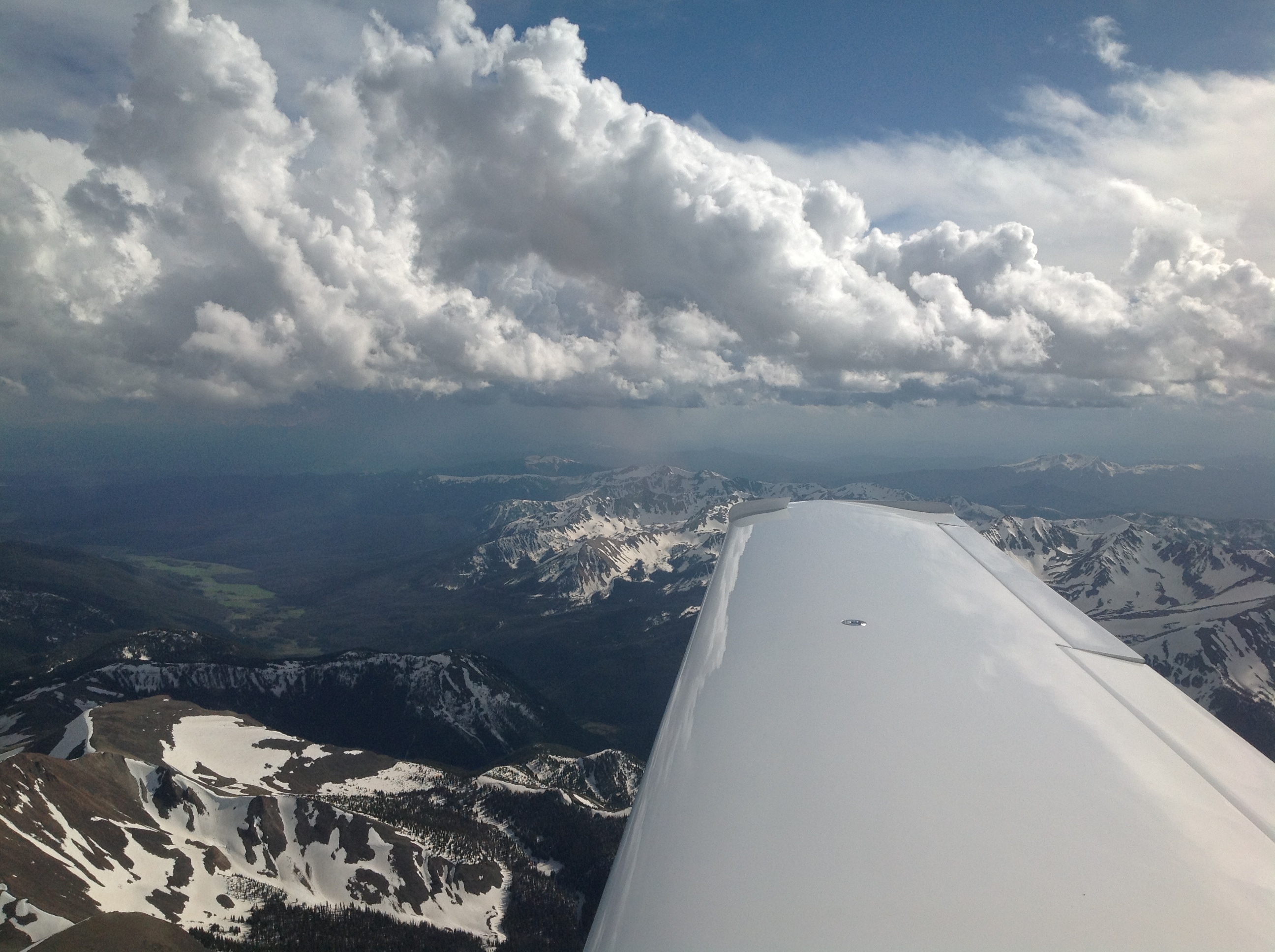Land is another important resource. On both private and public lands Colorado ranchers raise the state’s number one agricultural commodity, beef. Public lands rely on the important partnership between the Bureau of Land Management and ranchers who help put grass — an abundant natural resource — to efficient use by grazing cattle in high mountain meadows throughout the summer.
For Denver attorney Kent Holsinger, simply piloting his airplane isn’t enough. Piloting his airplane and breaking a record doing it? Now that’s more like it!
 During the summer of 2019, Holsinger will attempt to set a speed record by flying from the highest airport in North America (Leadville, elev. 9,933 ft.), to the lowest airport in North America (Furnace Creek, Death Valley, elev. -210 ft.). To do so he will need to maintain an average airspeed faster than 147.5 miles per hour in his Lancair Super ES airplane.
During the summer of 2019, Holsinger will attempt to set a speed record by flying from the highest airport in North America (Leadville, elev. 9,933 ft.), to the lowest airport in North America (Furnace Creek, Death Valley, elev. -210 ft.). To do so he will need to maintain an average airspeed faster than 147.5 miles per hour in his Lancair Super ES airplane.
This won’t be a simple flight. To break the record, the right stars will have to align at the right time. Holsinger will need cooperation from both the National Aeronautic Association and the Federal Aviation Administration. The weather will have to be perfect, the plane immaculately maintained. But it will all be worth it if he can break the record.
However, the record-breaking attempt isn’t the only goal. Holsinger’s trip will take him across western Colorado, Utah, Nevada and California. Along the way, he will fly over 17 federal wilderness areas, five national forests, three national parks and countless other natural resources. Holsinger hopes the flight brings attention and raises awareness of the critically important natural resources that he will see out the cockpit windscreen.
The view from the sky isn’t only a pretty sight, these resources play a key role in the region’s economic vitality and the success of local agriculture production. The water Holsinger will see is critical to growing crops and raising livestock and an ever-important resource to Colorado and surrounding states that depend on Rocky Mountain snowmelt. Holsinger will fly over Olathe, where a large part of Colorado sweet corn farms are located. Even Rocky Ford melons in far, southeastern Colorado are grown with water that originates in the Upper Arkansas River Basin near Leadville.

Sheep producers use those same resources to grow lamb and wool. On private land, those same ranchers provide critical habitat for wildlife, which drive outdoor recreation and hunting activities and further contributes to a balanced ecosystem.
“The natural resources Kent’s flight will pass over are a great reminder of what makes Colorado great.”
The natural resources don’t stop there. In addition to public lands, water and agriculture production, the flight will traverse over mining operations, oil and gas production and active forest management areas.
“These natural resources are vital for jobs, communities, economies and our nation,” said Holsinger. “Thanks to the best technology and the toughest environmental laws in the world, we can celebrate not only the beauty and history of these lands, but the resources they produce too.”
The flight will cross the southern end of the Piceance Basin in western Colorado. The Basin is a rich natural gas deposit and provides a significant contribution to the nation’s 100+ year supply. In several places, Holsinger will also see significant deposits of lead, gold, silver and uranium, as well as historic and currently operating coal mines. In Utah and Nevada, resources include agricultural products and grazing, as well as zinc, tungsten, nickel, cobalt and gypsum mines.
“The natural resources Kent’s flight will pass over are a great reminder of what makes Colorado great,” said Chad Vorthmann, Executive Vice President of Colorado Farm Bureau. “Our natural resources and robust agriculture economy help define our state’s boundaries, its economy, and its western heritage. Our farmers and ranchers still grow food with resources developed by the pioneering spirit of Colorado’s first settlers. Without our water, agriculture, mining, and energy, Colorado would not be the vibrant and dynamic place it is today.”
Holsinger grew up on a ranch in North Park, a couple of hours west of Fort Collins. After a stint as a congressional aide, and as assistant director for water at the Colorado Department of Natural Resources, Holsinger launched his law practice in 2006 where he specializes in lands, wildlife and water law. Over the years, he’s represented farmers, ranchers and agribusiness in various capacities across the state. He became a private pilot in 2009 and has logged over 1000 flight hours flying across Colorado and 15 other states.
Holsinger completed a practice flight on May 12th to check the radar and radio coverage necessary to log the flight into the record books. If the weather cooperates, he may be able to complete the flight by the end of June but can keep trying through August 8th.




